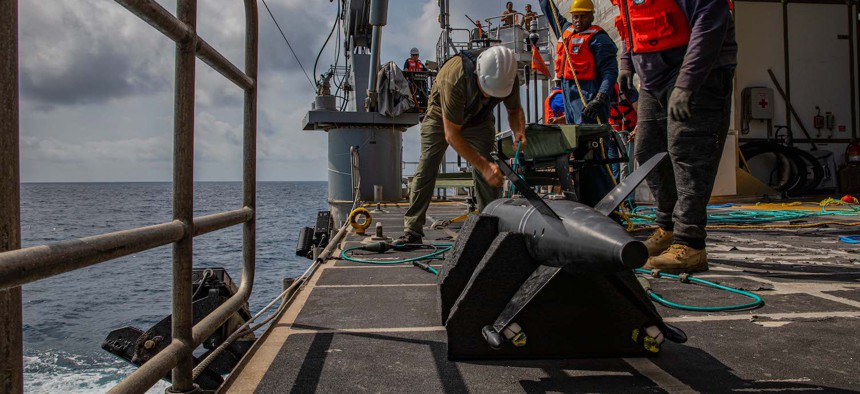Autonomous weaponry is on the horizon, with recent advancements by the Pentagon in experimental aerial and naval technologies paving the way for cost-effective attack drones and innovative strategies integrating AI in pivotal roles. Notably, the U.S. Navy and Air Force trials have underscored potential divergences in the application of autonomous weapons compared to nations like China and Russia.
During the annual Unitas exercise, the Navy orchestrated swarms of air and sea drones that collaborated to gather and exchange reconnaissance data, facilitating swift detection, identification, and neutralization of enemy vessels by the multinational fleet.
Rear Adm. James Aiken, the commander of the 4th Fleet, revealed insights from the July exercise, emphasizing the successful interception of six high-speed patrol boats targeting the fleet. This feat was achieved through the coordinated efforts of unmanned surface and air vessels, bolstered by international partner missiles.
The 4th Fleet, in conjunction with the 5th Fleet, stands at the forefront of the Navy’s exploration of emerging AI concepts. Former CNO Adm. Michael Gilday advocated for operational experiments in response to challenges such as grey-zone operations and smuggling.
Furthermore, advancements in unmanned and AI systems hold promise in enhancing maritime security by preempting hostile activities against international shipping routes. Leveraging video footage and sensor data, these systems can fortify surveillance capabilities and foster seamless information sharing with stakeholders ranging from shipping companies to governmental entities.
In parallel, the Air Force showcased advancements in autonomy and AI, exemplified by the XQ-58 high-performance drone’s AI-enabled functionalities. This groundbreaking development marked a significant milestone, with AI algorithms piloting the drone autonomously for the first time in aviation history.
The evolution towards AI-enabled autonomy signifies a departure from traditional drone operations, enabling a more nuanced decision-making process to achieve mission objectives effectively. This collaborative synergy between human operators and AI systems sets a precedent in military autonomy research, distinguishing U.S. initiatives from global counterparts.
As the realm of autonomous weapons evolves, the Defense Department’s revised policy on autonomous systems aims to delineate permissible applications, emphasizing the importance of senior-level scrutiny for compliance with established guidelines. This strategic approach ensures responsible development and deployment of autonomous weapon systems, aligning with international efforts to establish norms for AI utilization in military domains.
By fostering international collaboration and adherence to ethical standards in AI-driven military technologies, the United States seeks to shape a secure global landscape while mitigating risks associated with unpredictable behaviors of autonomous systems. This underscores the pivotal role of robust multinational alliances and institutions in safeguarding against emerging threats and ensuring collective security.






